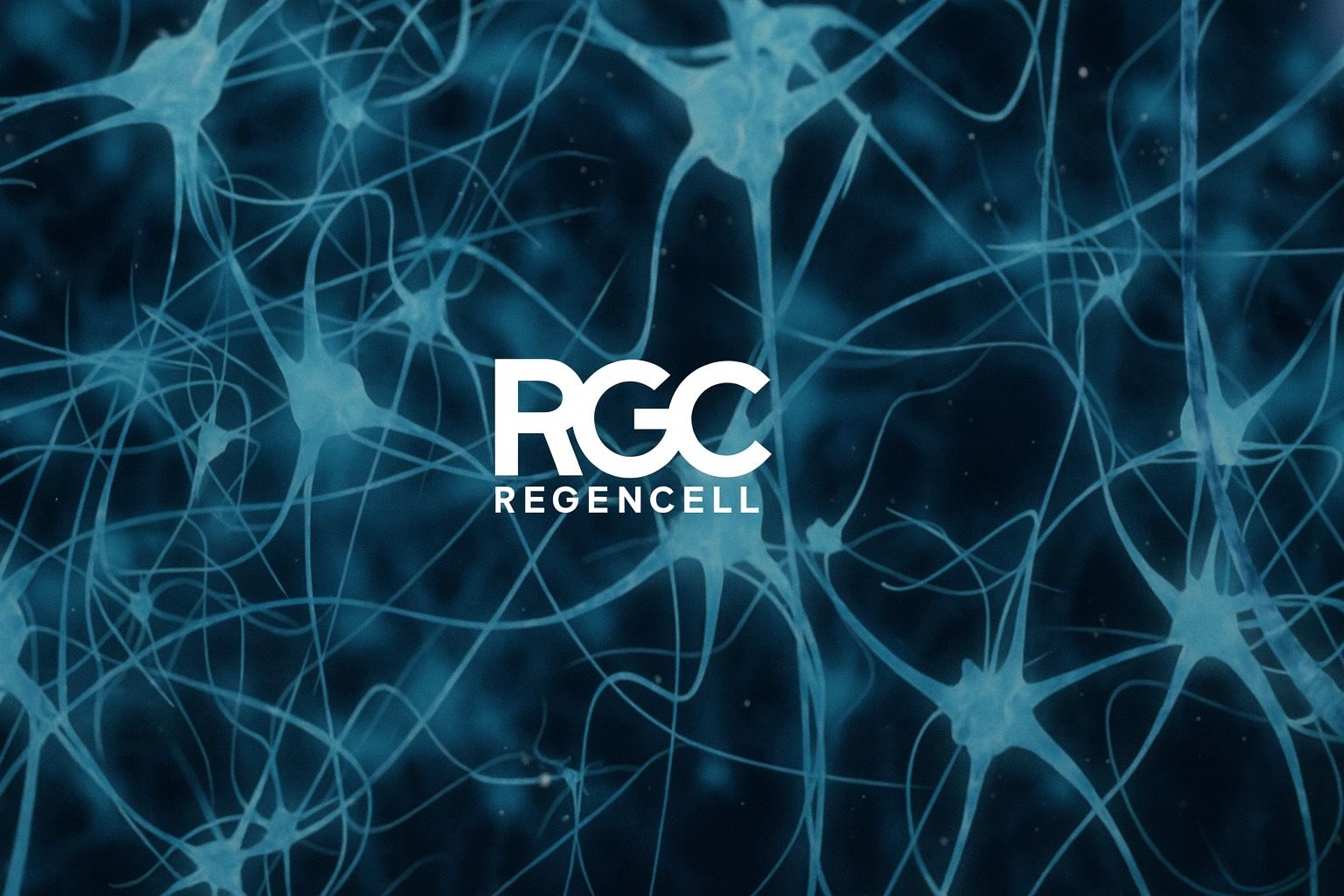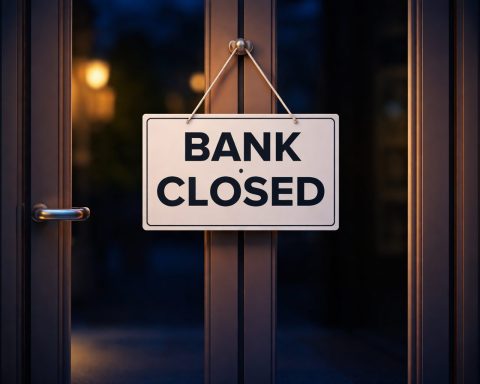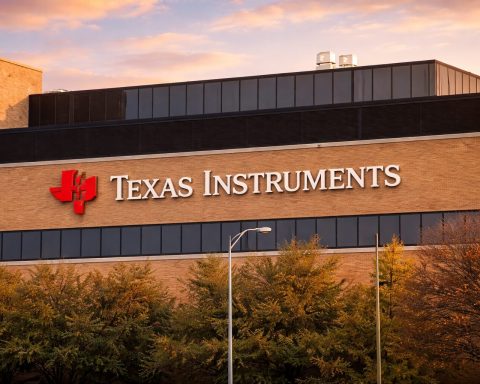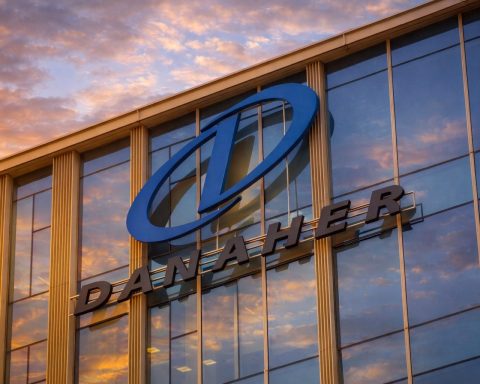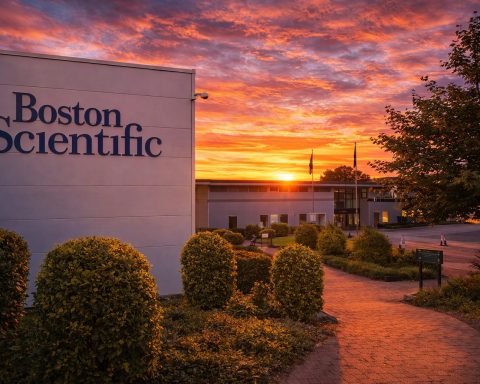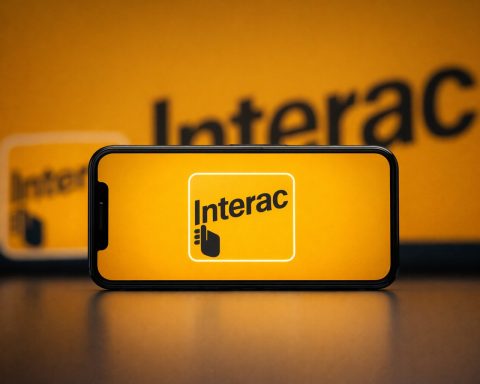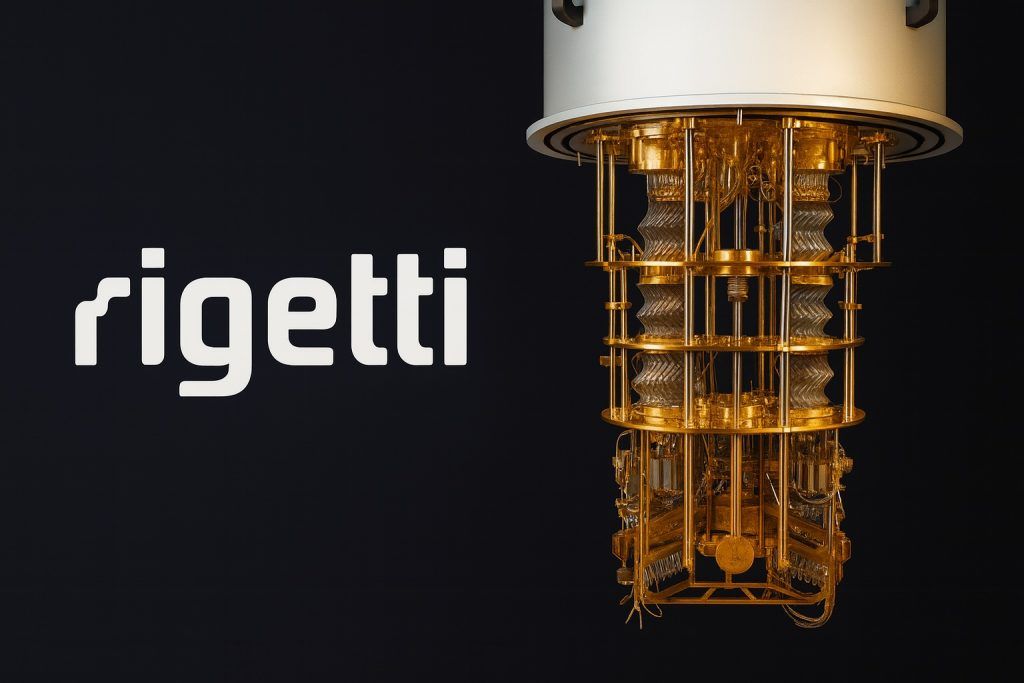- Unprecedented Surge: Regencell Bioscience Holdings (NASDAQ: RGC), a tiny Hong Kong-based biotech, saw its stock explode by tens of thousands of percent in 2025. At one point, RGC was up over 82,000% year-to-date, briefly transforming this no-revenue company into a $33 billion market-cap giant [1]. (For context, it started the year around $0.10 and rocketed to a peak of $83.60 [2].)
- Rapid Rise & Crash: The rally was not driven by any FDA approval or blockbuster drug news – “no press conference, no update” – just a frenzy of speculative buying [3]. After peaking in June, RGC’s price plunged 74% within days [4]. As of October 3, 2025, the stock trades around $17 (market cap ~$8.5B), still up ~13,000% for the year [5] but massively below its highs. Extreme volatility led to numerous trading halts by regulators during the run-up [6] [7].
- What RGC Does: Regencell is an early-stage biotech focused on Traditional Chinese Medicine (TCM) treatments for neurocognitive disorders like ADHD and autism [8]. Its flagship “Brain Theory” herbal formulas (developed by the CEO’s father) aim to reduce symptoms in these conditions [9]. The company has zero revenue so far and relies on funding from shareholders and equity raises to conduct R&D [10] [11]. In FY2024 it posted a net loss of $4.4 million (and ~$6.1M loss in FY2023) [12] [13]. With no approved products or licensing deals yet, all future profits are purely aspirational at this stage.
- 38-for-1 Stock Split Fuelled the Frenzy: In June 2025, RGC executed a 38-to-1 forward stock split, slashing its share price from over $2,000 to about $54 overnight [14]. This made the stock appear “cheap” to retail traders and dramatically increased liquidity. The timing was perfect: waves of social-media hype about RGC’s TCM potential and short-squeeze chatter sent volumes surging +2,700% on June 16 alone [15]. Analysts dubbed it a “short squeeze on steroids”, as a tiny float (only ~6% of ~500M shares) and heavy short interest created a GameStop-like feedback loop [16]. The result: RGC shares skyrocketed 64,000% in a week during mid-June’s speculative fervor [17].
- Retail Mania & Meme Stock Parallels: RGC’s mind-boggling ascent is reminiscent of meme-stock frenzies. Observers likened it to AMTD Digital (HKD) – a Hong Kong fintech that surged 21,000% in days back in 2022 on pure hype [18] [19] – and even to the GameStop/AMC saga. Like those episodes, RGC’s surge was propelled by online forums and momentum traders, not fundamentals. In fact, one market pundit bluntly labeled Regencell a “house of cards” driven by hype, urging extreme caution [20].
- Fundamentals vs Valuation: Even after the pullback, RGC’s valuation is extraordinary given its fundamentals. At ~$17 per share, it commands over $8 billion in market cap [21] – a level typically reserved for biotech firms with significant revenues or at least promising Phase 3 trial data. By contrast, Regencell has no approved drugs, no revenue, a staff of 12, and is essentially a clinical-stage startup [22] [23]. Key financial metrics like P/E or EV/Sales are meaningless (no earnings or sales yet) [24]. The share price is entirely built on momentum and speculation rather than business performance [25].
- Insider Control, Low Float: The company’s ownership is highly concentrated – CEO and founder Yat-Gai Au holds about 81% of the shares [26]. Insiders in total control over 80%, leaving only ~30 million shares truly free-floating [27]. This ultra-low float amplifies volatility: RGC’s stock has a beta of 2.05 (very high) and an annualized volatility around 76%, several times the market average [28]. With so few shares available and rabid trading by retail investors, the price has swung wildly on minimal news. Notably, institutional ownership is almost nil (≈1%) [29], meaning the investor base is mostly individuals – a hallmark of a speculative “meme” stock.
- Regulatory Scrutiny: The bizarre surge in a foreign micro-cap hasn’t gone unnoticed by regulators. Both the SEC and FINRA have systems to flag anomalous activity, and experts say RGC’s 82,000% spike is “exactly the kind of movement that draws scrutiny.” [30] Regulators have already proposed tightening rules for overseas companies listed in the U.S., like Regencell, to curb potential market manipulation [31]. While no wrongdoing has been proven, the absence of any news or insider trades during the rally raises questions. Going forward, any hint of an SEC investigation or trading restrictions would be a major risk factor for investors.
- Recent News and Developments: In late September 2025, Regencell’s rising profile earned it inclusion in the S&P Global BMI Index (a broad market index) [32] [33]. This index addition could force some index-tracking funds to buy RGC, adding some demand. The company has an earnings report due on Oct 24, 2025, but since RGC has no revenue, investors will be watching more for any management updates on R&D progress or funding plans than for financial results. Notably, the CEO has made large personal share purchases in the past (over $5M in 2021) to signal confidence [34] [35]. Traders are also anticipating possible clinical trial readouts by late 2025 – Regencell has been conducting efficacy trials of its TCM formula for ADHD/ASD in Malaysia and Hong Kong [36]. Any news of successful trial results or regulatory filings (expected perhaps in 2026) could be a big catalyst – for better or worse.
RGC’s 2025 Rollercoaster: From Penny Stock to $33B Phenomenon
Regencell Bioscience’s journey in 2025 has been nothing short of astonishing. The company went from an obscure penny stock (literally trading under 10 cents) to a meteoric high of $83.60 within months [37]. This 820-fold increase was “far stranger” than a typical biotech breakthrough – it happened without any major scientific news or product launch [38]. Instead, a perfect storm of speculative forces sent RGC into the stratosphere.
The catalyst was announced in early June: a 38-for-1 stock split. Overnight, Regencell’s share count multiplied and the price per share dropped from over $2,000 pre-split to the mid-$50s [39]. While a split doesn’t change a company’s intrinsic value (much like cutting a pizza into more slices doesn’t give you more pizza), it does make shares more “affordable” and optionable for traders [40]. In Regencell’s case, the split came just as retail investor chatter was heating up. Suddenly, thousands of new traders could pile into RGC, and they did – in droves [41]. On June 16, the day the split took effect, volume and momentum exploded. The stock was halted repeatedly for volatility as it spiked over 200% in a single session [42] [43]. Over the next week, RGC kept ripping higher – at one point soaring 64,000% in just 7 days [44], a jaw-dropping run that made headlines across the financial world.
Importantly, nothing about Regencell’s actual business had changed. The company still had no revenues and was years away from any potential product commercialization. Yet for a brief moment, its paper value eclipsed that of established biotechs hundreds of times its size. Founder Yat-Gai Au’s personal stake (he owns ~81% of RGC) ballooned so much that he temporarily became one of the richest men in Hong Kong on paper [45]. This was wealth created (and later vaporized) purely by speculative fervor. As one report dryly noted, “a small, loss-making traditional Chinese medicine firm with no revenue catalyst suddenly became a $33 billion giant — at least for a few days.” [46]
By late June, the euphoria hit a wall. After topping out in the $70s–$80s range, RGC’s stock came crashing down, losing nearly three-quarters of its value in a matter of days [47]. For those who bought at the peak, the reversal was brutal. It was a vivid reminder that what goes up can come down just as fast, especially when the climb was built on hope and hype. Indeed, one thing became clear: the music can stop very quickly in a $33B game of musical chairs [48]. Regencell’s round-trip from obscurity to insanity and partway back has drawn comparisons to past speculative bubbles – from the dot-com penny stocks of 1999, to GameStop’s 2021 meme stock squeeze, to AMTD Digital’s inexplicable 21,000% jump in 2022 [49] [50]. Each of those cases showed how retail trading mania and a tiny float can create eye-popping market caps that defy logic, if only temporarily.
So, what drove Regencell’s wild ride? A few factors stand out:
- Low Float & High Concentration: With over 80% insider ownership, only a few million RGC shares trade freely [51]. When a flood of buyers arrived, supply was scarce – a recipe for an exaggerated price spike. Short sellers who bet against the stock likely got squeezed as well, having to buy back shares at ever-higher prices, which further fueled the rally [52]. Traders on forums noted this dynamic, with some dubbing RGC “GameStop on hard mode” due to the even tighter float and heavier hand of retail momentum [53].
- Social Media Hype: Regencell became a hot ticker on platforms like Reddit’s WallStreetBets and X/Twitter. The company’s unusual story – Traditional Chinese Medicine for autism/ADHD – gave it a kind of narrative appeal. Some promoters spun it as a play on the huge ADHD drug market or the trend toward natural remedies. There was also an element of novelty: many traders had never heard of RGC, so it felt like “discovering” a hidden gem. (In reality, of course, nothing fundamentally justified a 50,000%+ run-up, but in the short term narrative can trump numbers.)
- Technical Triggers: The stock split itself was a key technical trigger. Not only did it lower the price, but it also reset option strike prices and created what some analysts call “gamma squeeze” conditions (market makers buying stock to hedge call options as the price rises) [54] [55]. In addition, RGC’s surge made it show up on “top gainer” scans and trading apps, attracting more momentum chasers. It became a self-reinforcing cycle – until it wasn’t.
- Speculative Fever in Biotech: By mid-2025, there was a resurgence of speculative trading in small-cap biotech and healthcare names. After a tough 2022–2023, risk appetite returned in pockets of the market, and Regencell hit at the right time. Its massive move even outshone other high-flyers, prompting some retail traders to rotate profits from prior plays into RGC, hoping the party would continue. But as we saw, those late to the party got burned when reality (and gravity) set in.
In summary, RGC’s 2025 surge has been a case study in market psychology. Early believers and opportunistic traders scored life-changing gains on paper, while latecomers faced painful losses. The episode underscores that, especially in biotech, stock prices can detach from fundamentals in the short term – but eventually fundamentals (or the lack thereof) reassert themselves. As one commentator quipped regarding Regencell, “stock splits don’t create value any more than cutting a pizza into smaller slices creates more food” [56]. The underlying business hadn’t suddenly improved by 82,000%, so inevitably the stock couldn’t hold such lofty levels.
Company Fundamentals: A Reality Check
Now that the dust has settled somewhat, what does Regencell Bioscience actually have going for it? Here’s the reality behind the ticker:
No Revenue (Yet): Regencell is a pre-revenue biotech. It has never generated a dollar of product sales to date [57]. The company’s focus is on developing and testing its TCM-based treatments, which means it currently operates more like a research outfit than a commercial enterprise. All operating expenses – R&D, admin, a bit of marketing – are funded by cash on hand (raised from the IPO and subsequent share issuances) and loans from insiders or related parties [58]. According to the latest filings, Regencell had a net loss of about $1.85 million in the last half-year period and $4.4 million loss in fiscal 2024 [59] [60]. These losses are normal for a young biotech, but what’s abnormal is the multibillion-dollar market cap despite zero revenue to offset those losses.
Tiny Balance Sheet: As of the last reported period, the company’s assets are under $10 million (mostly cash) [61]. This is a drop in the bucket compared to an $8+ billion valuation. In simple terms, RGC’s stock is pricing in huge future success that hasn’t materialized yet. The company will likely need to raise much more capital to fund clinical trials and eventually commercialization, which could mean issuing more shares (dilution) down the road [62] [63]. In fact, Regencell’s auditors have previously raised a “going concern” warning – essentially questioning if the company can continue operating without new financing [64]. For investors, that’s an important risk: at some point RGC may sell additional shares or debt to raise cash, which, if done at a lower stock price, would dilute existing shareholders.
Pipeline and Research: Regencell’s scientific premise is intriguing but unproven. They are leveraging Traditional Chinese Medicine – essentially herbal formulations – to treat modern neurological disorders. The flagship formula is aimed at ADHD (Attention Deficit Hyperactivity Disorder) and ASD (Autism Spectrum Disorder) symptoms [65]. These conditions have a large and growing patient population worldwide, and current treatments (like stimulants for ADHD) can have side effects, so a safe herbal alternative would indeed be valuable. Regencell has reported some interim trial results from early-stage studies: for example, a small-scale trial in Malaysia claimed improvements in some ADHD/ASD symptoms after using their formula for 3 months, according to past press releases. However, these results have not been published in peer-reviewed journals nor confirmed in large trials. The company also at one point mentioned an experimental TCM formula (“RGC-COV19TM”) for COVID-19 symptoms [66], though that was controversial and not a focus after pandemic times. No products are approved by any major regulator yet – not in the U.S., China, or elsewhere. That means Regencell must navigate clinical trials (likely Phase 2 and 3 still ahead) and regulatory review in each target country, a process that could take years.
It’s worth noting that traditional herbal medicine faces extra hurdles in Western markets. Unlike a typical single-molecule drug, TCM treatments are mixtures of natural compounds, which can complicate regulatory approval. As one analysis noted, even if the global TCM market is huge (estimated ~$200–250 billion), any company trying to bring TCM formulas into regulated markets must overcome skepticism and stringent efficacy/safety requirements [67]. This doesn’t mean Regencell’s approach can’t work – but it means they have a lot to prove in order to justify their valuation. For now, major pharmaceutical players and generic drug makers present stiff competition in the ADHD/autism space [68]. Until Regencell shows its therapy works in large trials, doctors will continue prescribing the standard treatments on the market.
Management & Shareholders: RGC is led by CEO Yat-Gai Au, who founded the company in 2014. He’s not a scientist by training (by background he’s an entrepreneur), but the key TCM formulations come from his father, a practitioner of Chinese medicine [69]. The CEO’s family and close associates keep tight control – Yat-Gai Au owns about 81% of the shares [70], and another major holder is a firm linked to Samuel Chen, known for being an early Zoom investor [71]. This heavy insider ownership means management’s interests are aligned with the stock (they certainly benefited from the price surge), but it also means outside investors have little say. Interestingly, despite the huge spike in price, there have been no insider stock sales reported during the run – a sign that insiders are holding on, or at least not registering sales that would need to be disclosed. Some might view that as confidence in the long term, while skeptics might wonder if insiders are simply locked up or avoiding the appearance of profiting from a hype-driven rally. In any case, the insider dominance and low float contributed to the volatility: with so few shares trading, small orders moved the price a lot.
Valuation Metrics: Traditional valuation methods can’t really be applied here. Regencell has no earnings (P/E is not applicable) and no revenue (can’t compute price/sales) [72]. One could attempt to benchmark it against other early-stage biotechs, perhaps by comparing market cap to pipeline prospects. But even there, RGC looks like an extreme outlier. Many pre-revenue biotech firms with one or two candidates in Phase 2 trials might be valued in the hundreds of millions, not billions, of dollars. For example, consider a peer in neurological drugs with no sales – its market cap might be $200M or $500M, often based on how far along its trials are and how promising the data is. Regencell at $8B+ is an order of magnitude beyond that. In fact, some analysts have flat-out called Regencell the most overvalued stock in biotech given the disconnect between its minuscule financials and massive stock price [73]. The only way to rationalize an $8B valuation is to assume Regencell’s treatments will eventually capture a significant chunk of the global ADHD/autism market. Is that possible? Perhaps in a rosy scenario – but it would require successful Phase 3 trials, regulatory approvals across multiple countries, and then strong commercial adoption against entrenched competitors. Those outcomes, if they happen at all, are several years away. That’s why even bullish commentators categorize RGC as “speculative” and high-risk [74].
Industry Outlook: Biotech, TCM, and Speculative Stocks
Biotech Sector in 2025: RGC’s story comes at a time when the biotech industry has been recovering from a downturn. In 2022, rising interest rates and risk-off sentiment hit biotech hard, especially small caps. By 2025, however, there’s been renewed interest in biotech breakthroughs (e.g. new gene therapies, Alzheimer’s drugs) and some thawing of capital markets for drug developers. That said, Regencell’s rise is far from the norm even in a bullish biotech tape. Most biotech investors still look for tangible progress – like a drug entering Phase 3 trials or at least some revenue from partnerships. RGC skipped over all those incremental steps and leaped into the stratosphere purely on a trading frenzy. This has made many biotech analysts uneasy, as it clouds the valuation landscape. If anything, some fear it distracts from more deserving companies or could scare off serious investors, and they warn it could end in a collapse that hurts overall market sentiment for the sector [75] [76]. In simpler terms, RGC has been an outlier “meme stock” in an otherwise science-driven industry.
Traditional Chinese Medicine Trend: Zooming out, Regencell is part of a broader trend of trying to integrate traditional remedies into modern healthcare. TCM has thousands of years of history and is widely used in China and other parts of Asia. In recent years, the Chinese government has promoted TCM industry growth, and global interest in “natural” or alternative treatments has increased. The global TCM market (including herbs, supplements, therapies) is indeed huge – roughly $200+ billion and projected to keep growing as complementary medicine gains traction [77] [78]. However, the vast majority of that market is in less regulated channels (over-the-counter remedies, wellness products, local practitioners). Bringing a TCM formula through the rigorous Western regulatory process (clinical trials, FDA approval, etc.) is uncommon. A few have tried – for example, some Chinese biotech companies attempt to get herbal compounds approved for diseases, but success stories are rare so far. One challenge is standardization: herbal mixtures can vary and it’s hard to patent protect a “natural” formula. Regencell’s formula for ADHD/ASD would need to clear a high bar of evidence to be accepted by doctors outside of niche integrative medicine circles. The industry does have a few small public companies focusing on TCM-based pharmaceuticals, but none have achieved a breakthrough approval in the US or EU yet. This means Regencell is attempting something quite ambitious. If they succeed, they could indeed tap into a huge unmet need (many families seek alternative treatments for autism/ADHD). But if they fail, RGC could join countless small biotechs that never make it past clinical trials – leaving behind nothing but a chart of a spectacular rise and fall.
Comparables and Competitors: It’s hard to find “apples to apples” comparables for RGC due to its unique mix of characteristics (TCM focus, meme-stock status). In the autism/ADHD treatment space, most players are big pharma (for instance, Takeda sells Vyvanse for ADHD, Johnson & Johnson markets autism-related symptom drugs, etc.). Those are multi-billion-dollar companies with extensive pipelines – not comparable in scale. In the realm of small-cap biotech, one could think of companies like Y-mAbs or Axsome Therapeutics (in CNS disorders) or perhaps Alkermes (which had an ADHD drug in development) – but again, those typically had at least some late-stage trials or product revenues when valued at a few billion. No-revenue biotechs surpassing $8B are virtually unheard of outside of bubble episodes.
From a trading standpoint, the better comparisons are to other speculative, low-float stocks that went on wild rides. We’ve mentioned a few:
- AMTD Digital (HKD): This Hong Kong fintech IPO’d in 2022 and inexplicably shot up 300-fold in weeks, briefly sporting a market cap larger than Coca-Cola, before crashing back to earth [79] [80]. Like RGC, it had very limited float and no fundamental basis for the valuation. Regulators also scratched their heads as retail forums celebrated the quick gains. HKD’s rise and fall is a cautionary tale RGC investors should heed – today, AMTD Digital trades at a tiny fraction of its peak price.
- Meme Stock Era (GameStop/AMC): In early 2021, GameStop (GME) spiked over 1,500% in weeks as Reddit traders squeezed hedge funds [81]. AMC Entertainment similarly jumped. Those companies at least had real businesses (stores, movie theaters), but their valuations became divorced from reality during the peaks. Eventually, after the hype cooled, both stocks gave back a lot of gains. The lesson: momentum works both ways, and timing is everything if you’re trading these names.
- VinFast (VFS): In mid-2023, Vietnamese EV maker VinFast went public via SPAC and shockingly ran up to over $190B market cap (briefly making it one of the world’s most valuable automakers) despite minimal revenue and huge losses [82] [83]. That was driven by a tiny float (the founder kept 99% of shares) and crazy speculative demand. Within a couple of months, VinFast’s stock plunged more than 90% from the top. It’s another reminder that when a float is small and hype is high, valuations can go to the moon – but gravity usually wins in the end.
For Regencell, these parallels suggest caution. None of those speculative spikes ended well for buy-and-hold investors. They were fantastic for early traders who got out near the top, but most people inevitably got in late or held too long. The broader industry takeaway is that such episodes are outliers and often provoke a backlash. In RGC’s case, regulators might tighten rules (especially for overseas small-caps) or investors might become more skeptical of low-float rockets, which could make it harder for RGC to repeat a similar feat.
On the flip side, there is a community of retail traders who thrive on these volatile plays. To them, RGC remains on the radar as a potential high-risk, high-reward lottery ticket. They point to the still-high short interest and say if any positive catalyst emerges, the stock could “squeeze” again for another big jump [84] [85]. Indeed, in early July 2025 after the big drop, RGC briefly spiked +120% in a single day, suggesting the volatility isn’t over [86]. So long as the stock retains meme status and a devoted trading crowd, dramatic swings (both up and down) could be the norm. This aligns with the broader trend in markets where certain stocks trade more on sentiment and technical factors than on fundamentals.
Expert Opinions: Bulls vs. Bears
Given the extreme nature of RGC’s stock action, what are experts and analysts saying? In a nutshell, most are waving the caution flag, though some see a speculative opportunity if you truly understand the risks.
On the bearish side (which is where most traditional analysts land):
- “House of Cards” Warnings: Financial commentators have not minced words about Regencell’s valuation. Casey Dylan, an analyst writing on TipRanks, called RGC’s surge “astronomical” and driven by nothing but speculation, lacking any clear business justification. He noted the setup “appears driven purely by hype, not substance” and advised investors to avoid the stock, likening it to a house of cards that could collapse [87]. Similarly, a Seeking Alpha analysis bluntly labeled Regencell “the most overvalued stock in biotech” and predicted hefty losses for shareholders once reality sets in [88]. The consensus among these skeptics: RGC’s market cap is detached from fundamentals, and unless the company delivers miraculous clinical results, the stock is likely to keep trending down in the long run.
- No News = Red Flag: Many experts point out that RGC’s rally happened in a news vacuum. Bloomberg reporters noted that there was “little to no news” from the company during the spike – no breakthrough discovery, no big partnerships, nothing [89]. To seasoned market watchers, a stock multiplying thousands of percent on no news screams manipulation or irrational exuberance. They highlight that no insiders were buying or selling publicly either, which means the people closest to the company stayed on the sidelines. This lack of fundamental catalyst leads analysts to suspect the move was fueled by a coordinated trading push (possibly social media pumpers) or a short squeeze. Either way, it’s not something likely to be sustained. “If a $33 billion company can be created out of thin air, it can disappear just as quickly,” one might say. And indeed, much of that paper value did disappear just as fast.
- Regulatory/Ethical Concerns: Some market commentators are urging regulators to dig deeper. They find it hard to believe that pure retail frenzy alone could account for such a massive swing – there might have been behind-the-scenes actors as well. U.S. regulators have been wary of some foreign listings after past frauds (e.g., the China-based Luckin Coffee scandal). While there’s no specific allegation against Regencell, the unusual trading has put it on a watchlist. From an investor perspective, the risk is if any investigation or negative news comes out (even just a rumor of it), the stock could tank further. GuruFocus noted this is “exactly the kind of movement that draws scrutiny”, hinting that both the U.S. SEC and Hong Kong regulators could be asking questions [90].
- Fundamentals First: Nearly all serious biotech analysts emphasize that until Regencell proves its TCM treatment works in rigorous trials, the stock has no fundamental support. The phrase “priced for perfection” is an understatement here – RGC is priced for miracles. If the upcoming clinical trial results disappoint even slightly, or if timelines get delayed, the stock could face another brutal sell-off. Even a cash raise (dilution) announcement could send shares lower. Bears argue that the best-case outcome (herbal ADHD remedy becomes a hit product in a few years) is already more than priced in, whereas many worst-case outcomes (trials fail, cash runs out) are not being priced in at all by the market. This asymmetry of risk-reward makes it, in their view, an unfavorable bet for a rational investor.
On the bullish/speculative side (a minority, mostly among retail trading circles):
- “Lightning in a Bottle” Potential: A bullish take by TrendPulse Finance on AInvest argued that RGC’s unique situation offers a “now or never” chance for aggressive traders [91] [92]. They note that the 38:1 split and subsequent dip created a lower entry point and that retail momentum could easily return. If any positive catalyst hits – say encouraging trial data or a licensing deal – these speculators believe RGC could quickly surge again. The AInvest piece even laid out a trading strategy: buy on dips, set a tight stop-loss, and aim for another squeeze toward the $200–300 range post-split (which would be equivalent to the old highs) [93] [94]. They also mention that the global demand for natural therapies and the enormous ADHD/autism market mean that Regencell’s story could attract serious investors or partners down the line if it shows concrete progress [95]. In short, the bulls see RGC as a high-risk, high-reward play: you might lose big, but if lightning strikes twice, the gains could be huge.
- Undervalued… in 10 Years? Some optimists argue that while RGC’s current valuation is hard to justify, it might not be crazy if you believe in the long-term vision. They point out that the worldwide ADHD drug market is over $20 billion annually, and autism therapies represent a growing multi-billion segment too. If Regencell’s herbal treatments eventually captured even a single-digit percentage of that, the revenue could be in the hundreds of millions per year. Additionally, the TCM wellness market in Asia is massive. So, they speculate that Regencell might evolve beyond just one or two formulas – perhaps it could leverage its brand and research into a broader natural therapeutics company. These are very speculative what-ifs, but it’s how some holders justify staying in. They effectively treat RGC more like a long-dated option: either it goes nearly to zero or one day becomes a legitimate big player in its niche.
- Index Inclusion & Institutional Interest: A small positive for RGC’s outlook is that inclusion in indexes like the S&P Global BMI will force some passive funds to buy and hold the stock [96] [97]. Furthermore, if the company manages to sustain a multibillion valuation by the time it has real trial results, it might start to get noticed by institutional biotech investors or even big pharma (as a partnership candidate). Right now, as noted, institutions are nearly absent – likely due to governance concerns and lack of fundamentals. But bulls hope that could change if RGC demonstrates legitimacy scientifically.
Overall, however, even bullish analyses couch their optimism with strong warnings. For example, the AInvest piece, despite its enthusiasm for another squeeze, clearly labeled RGC a “speculative play” suitable only for those who “can stomach volatility” and sized appropriately (no more than a couple percent of a portfolio) [98] [99]. Likewise, Finimize’s report concluded that Regencell is basically a “pure speculative biotech gamble” – a plaything for risk-tolerant traders, not an investment grounded in fundamentals [100]. It advised that more cautious investors will want to wait until the company actually delivers real results (like revenue or an approved drug) before considering jumping in [101].
Future Forecast: What’s Next for RGC?
Predicting the future for a stock as mercurial as RGC is difficult – it could crash further, spike again, or seesaw wildly. That said, we can outline a few scenarios and factors to watch:
- Continued Volatility Likely: In the near term, expect RGC to remain highly volatile. The stock still attracts day traders and momentum players, so news events or even rumors can cause outsized moves. For instance, heading into the October 24 earnings update, any hint from management about trial timelines or financing needs could swing the stock. Given the lack of fundamental anchors, RGC’s price will be driven by sentiment. If broader market volatility picks up (say, due to interest rate changes or geopolitical events), speculative stocks like RGC often move more dramatically as traders rebalance portfolios. A beta above 2 means RGC typically moves twice as volatile as the market on a given day [102] – and often independent of it.
- Downside Risks: On the downside, dilution is a real risk in coming months. Regencell will need money to fund its next trial phases. Its last reported cash was only a few million, which isn’t enough for extensive Phase 3 trials or global regulatory submissions. The company might issue new shares or convertible bonds in late 2025 or early 2026 to raise cash [103]. If that happens at a price much lower than current levels, it could put significant downward pressure on the stock (imagine, for example, an equity raise at $10/share – that would likely cause the market price to gravitate toward that level). Another risk is regulatory failure: if the next round of trials fails to show convincing efficacy, the market could all but give up on RGC’s prospects. Any official inquiry into the trading activity or new short-seller report could also hammer the price. In a worst-case scenario, one could imagine RGC shares eventually drifting back to penny-stock territory if the hype fully evaporates and no tangible progress replaces it.
- Upside Wildcards: On the upside, a few catalysts could spark renewed buying. The most legitimate would be positive clinical results. If Regencell announces that a larger trial (perhaps in Malaysia or elsewhere) showed statistically significant improvement in ADHD or autism symptoms, it would lend some credibility to their platform. That could attract strategic partners or at least inspire a short-term rally as traders jump on “good news.” Another upside catalyst could be any high-profile endorsement or investment – for example, if a notable biotech investor or fund took a stake, or if a pharma company signed a partnership to co-develop a treatment. That kind of validation could cause a spike. There’s also the residual possibility of another short squeeze. If short interest remains high and the float remains low, any sudden surge in demand (even for irrational reasons) could cause outsized price jumps as shorts scramble to cover. However, betting on a short squeeze is extremely risky and unpredictable – it’s a bit like hoping to win the lottery twice.
- Moderate Scenario: It’s also possible RGC’s stock settles into a more sideways range for a while. After such a dramatic saga, sometimes stocks enter a period of consolidation. For example, trading between say $10 and $20 for several months as the company quietly works on trials and the speculative crowd moves on to the next hot thing. During this time, volume might drop and volatility cools. This could actually be healthy – it would give fundamental-minded investors time to assess the company on its merits rather than hype. If RGC can use its elevated stock price to raise enough cash, it might secure a couple years’ runway to operate. Then the story becomes: can they turn that cash into clinical success? The 2026-2027 period would likely be when we see if Regencell can graduate from story stock to real biotech company.
Long-Term Outlook: For long-term investors considering RGC (a very small group, presumably), the bet is essentially binary. Either Regencell eventually proves its therapies and creates a real business – or it doesn’t. If it does, one could envision the company by, say, 2030 having one or two approved products in Asia (perhaps first in Hong Kong or Malaysia) and generating some revenue from them. Even then, breaking into Western markets would be tough, but not impossible if they gather sufficient clinical evidence. In that success scenario, RGC might justify a substantial valuation, though whether it would be higher than today’s $8B is hard to say (the market might have already priced a lot of that in). Conversely, if trials fail or the treatments just don’t gain traction, RGC could fade away like many small biotechs do, with the stock eventually reflecting only its remaining cash value (which would be much lower than now).
It’s also worth noting an external factor: market conditions. RGC’s ability to raise money and investors’ appetite for risk will depend on the macro environment. If interest rates remain high and money is tighter, speculative stocks often struggle. If a recession hits, investors might flee risky assets, which would hurt RGC. On the other hand, if the bull market in tech/biotech roars on, there will always be some speculative capital willing to gamble on the next big thing, and RGC could benefit from that milieu.
Bottom Line – Caution Prevails: Most experts agree that extreme caution is warranted with RGC. It’s the kind of stock that can make or break fortunes, and largely not in a predictable way. As the Finimize analysts aptly summarized, Regencell is “all about hype, momentum, and the dynamics of a tight share supply, not about business progress or profit.” [104] In the long run, sustainable investor returns will require actual execution by the company – successful trials, regulatory approvals, and commercial sales. Until there’s evidence of those, any investment in RGC is essentially a bet on crowd psychology more than company fundamentals. That doesn’t mean money can’t be made – clearly, some did on the way up – but it means one should be prepared for violent swings and high risk.
For a public audience reading this, the story of RGC is as much a cautionary tale as it is an intriguing opportunity. It showcases both the thrill and peril of speculative stock investing. Investing in Regencell now is less about investing in a business and more akin to speculating in a highly volatile asset, almost like a cryptocurrency or a call option on future success. As always, never invest more than you can afford to lose in such situations. The RGC saga isn’t over, but whether it becomes a comeback story or a forgotten bubble remains to be seen.
Sources:
- GuruFocus/Bloomberg, “Regencell’s 82,000% Surge: The $33 Billion Stock Rally That Nobody Can Explain” [105] [106]
- StockAnalysis, Company Profile & Stats for RGC [107] [108]
- AInvest (TrendPulse Finance), “Why Regencell’s 38-to-1 Split and Retail Surge Signal a Once-in-a-Decade Opportunity” [109] [110]
- Finimize, “Regencell’s Stock Went Wild, But Revenue’s Still Elusive” [111] [112]
- TipRanks (C. Dylan), “Speculative Frenzy Suggests RGC is a House of Cards” [113] [114]
- CBS News, on AMTD Digital meme stock surge [115] [116]
- MarketScreener, Regencell added to S&P Global BMI Index [117] [118]
- Reuters, various reports on VinFast SPAC surge [119] and others for context.
References
1. www.gurufocus.com, 2. stockanalysis.com, 3. www.gurufocus.com, 4. www.gurufocus.com, 5. www.marketscreener.com, 6. www.gurufocus.com, 7. www.gurufocus.com, 8. stockanalysis.com, 9. www.gurufocus.com, 10. finimize.com, 11. finimize.com, 12. www.gurufocus.com, 13. www.tipranks.com, 14. www.ainvest.com, 15. www.ainvest.com, 16. www.ainvest.com, 17. www.ainvest.com, 18. www.cbsnews.com, 19. www.cbsnews.com, 20. www.tipranks.com, 21. stockanalysis.com, 22. finimize.com, 23. finimize.com, 24. finimize.com, 25. finimize.com, 26. www.tipranks.com, 27. finimize.com, 28. finimize.com, 29. www.ainvest.com, 30. www.gurufocus.com, 31. www.gurufocus.com, 32. www.marketscreener.com, 33. www.marketscreener.com, 34. stockanalysis.com, 35. stockanalysis.com, 36. finimize.com, 37. stockanalysis.com, 38. www.gurufocus.com, 39. www.ainvest.com, 40. www.tipranks.com, 41. www.ainvest.com, 42. www.gurufocus.com, 43. www.gurufocus.com, 44. www.ainvest.com, 45. www.gurufocus.com, 46. www.gurufocus.com, 47. www.gurufocus.com, 48. www.gurufocus.com, 49. www.cbsnews.com, 50. www.cbsnews.com, 51. finimize.com, 52. www.ainvest.com, 53. www.ainvest.com, 54. www.ainvest.com, 55. www.ainvest.com, 56. www.tipranks.com, 57. finimize.com, 58. finimize.com, 59. www.gurufocus.com, 60. www.tipranks.com, 61. www.sec.gov, 62. finimize.com, 63. finimize.com, 64. finimize.com, 65. stockanalysis.com, 66. www.ainvest.com, 67. www.tipranks.com, 68. finimize.com, 69. www.gurufocus.com, 70. www.tipranks.com, 71. www.gurufocus.com, 72. finimize.com, 73. seekingalpha.com, 74. finimize.com, 75. www.tipranks.com, 76. www.tipranks.com, 77. www.ainvest.com, 78. www.tipranks.com, 79. www.cbsnews.com, 80. www.cbsnews.com, 81. www.cbsnews.com, 82. goodmoneyguide.com, 83. qz.com, 84. www.ainvest.com, 85. www.ainvest.com, 86. www.gurufocus.com, 87. www.tipranks.com, 88. seekingalpha.com, 89. www.gurufocus.com, 90. www.gurufocus.com, 91. www.ainvest.com, 92. www.ainvest.com, 93. www.ainvest.com, 94. www.ainvest.com, 95. www.ainvest.com, 96. www.marketscreener.com, 97. www.marketscreener.com, 98. www.ainvest.com, 99. www.ainvest.com, 100. finimize.com, 101. finimize.com, 102. finimize.com, 103. finimize.com, 104. finimize.com, 105. www.gurufocus.com, 106. www.gurufocus.com, 107. stockanalysis.com, 108. stockanalysis.com, 109. www.ainvest.com, 110. www.ainvest.com, 111. finimize.com, 112. finimize.com, 113. www.tipranks.com, 114. www.tipranks.com, 115. www.cbsnews.com, 116. www.cbsnews.com, 117. www.marketscreener.com, 118. www.marketscreener.com, 119. goodmoneyguide.com
